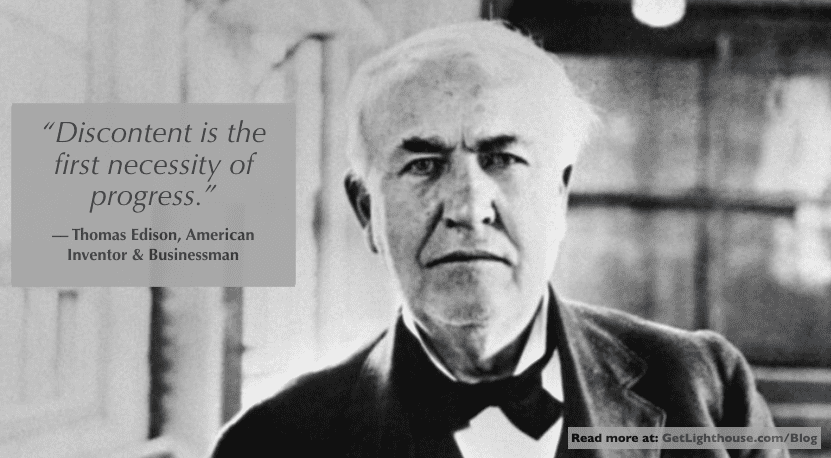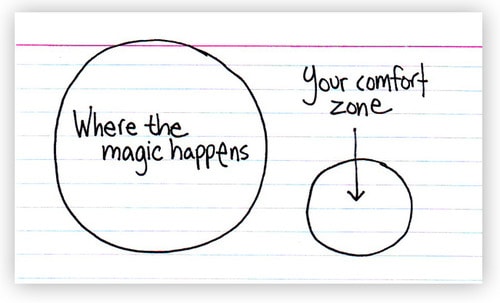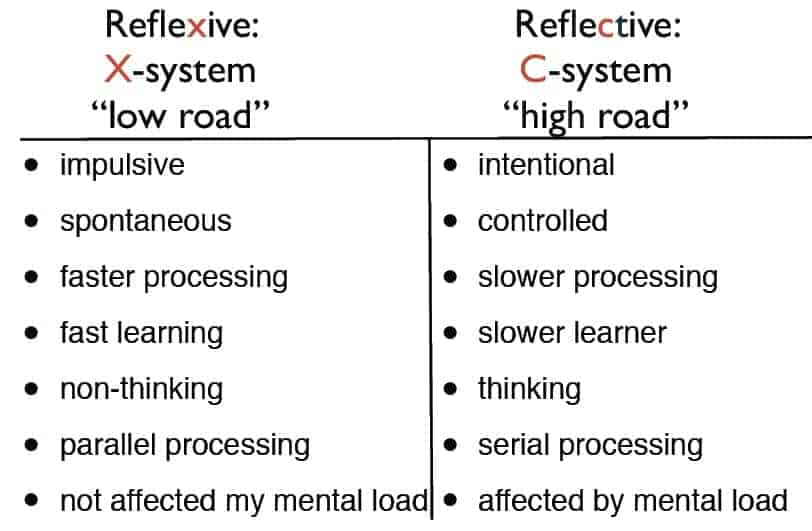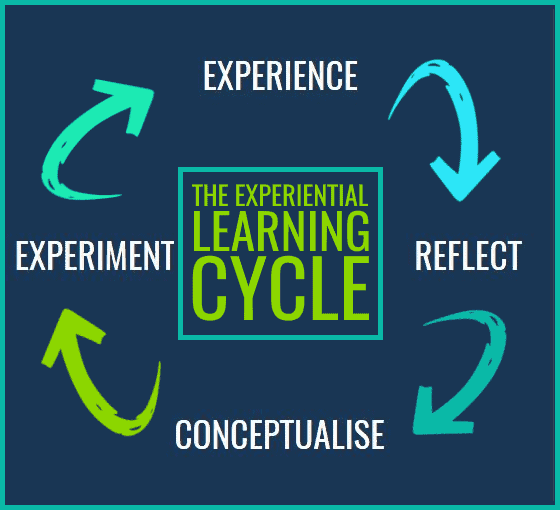"That is the worst thing that can happen to a company," said Wisse Dekker.
He's the former president of Dutch electronics company, Philips.
In 1990, he resigned after the company barely earned $3 million dollars in their first quarter. This was horrendous compared to the $130 million earned in the previous year.
Dekker confessed that not only were they suffering from a financial crisis, but also a "crisis of confidence."
Desperate, Philips hired Jan Timmer as new CEO. Timmer saw the dire situation and planned to take on the challenge head-on, with a key tactic of constructive discontent.
A plan to turn things around
Timmer gathered the company's top 100 managers and shared with them a harsh truth: bankruptcy was a possibility.
Philips was in last place. Consumers didn't care about their products. And, workers were disengaged. He knew that if employees failed to change how they communicated, Philips's end was near.
So, Timmer created an initiative called Operation Centurion.
He organized "town meetings" where employees of all ranks, products, and departments discussed plans to improve product quality and consumer experiences. In the meetings, disagreements were encouraged. Every voice was to be heard with equal attention. Senior management could be challenged without punishment.
In the book, Maximum Leadership, Timmer explained how these discussions shifted the workplace:
"The relationships are different now. If you sit...through sometimes very emotional discussions on very difficult issues, then you get to know each other, you get to respect each other.”
Timmer's initiative turned around their low employee engagement and boosted productivity. And it showed on their bottom line: In the mid-1990's, Philips reported $34 billion in sales and $1.1 billion in net earnings. Quite a turnaround from $3 million by his predecessor.
Timmer credited these improved relationships among staff for the turnaround:
"I can tell you whether that factory works or not; I can tell it from the body language of the employees and the way the people react to the foreman and the answers people give to him and the managers, and how unafraid they are. And I can walk out without looking at the figures, and I can tell you if that factory makes money or not."
The Power of Constructive Discontent to Help Your Business Thrive
The book, Shaping Business Leaders, defines constructive discontent as the act of staying focused and open while facing disagreements and criticism. Put simply, it's the art of embracing healthy conflict.
Timmer thrived as CEO of Phillips, because he created a culture of constructive discontent.
Contrary to popular belief, disagreement isn't always a bad thing. It's essential to creative problem-solving.
In his book, The Fifth Discipline, MIT's Peter Serge argues that the best teams embrace disagreements:
"In great teams, conflict becomes productive. The free flow of conflicting ideas is critical for creative thinking, for discovering new solutions no one individual would have come to on his own."
As humans, we're capable of great things. But, we do have limitations. What you lack in knowledge or skill, can be compensated, and complimented, by your co-worker's perspective.
However, constructive discontent isn't easy. Today, we take a look at how to build it at your company, and the benefits you'll experience if you do.
1) Learn to embrace discomfort
Timmer acknowledged that many managers sacrificed their ego to attend town meetings:
"We really began to get the best out of our people. Managers began to listen to the shop floor, where there is so much knowledge. It took the managers deflating themselves a little - deflating their importance - but it had to be done."
But, many executives weren't as open, so Timmer fired them. By the mid-90's, he had to hire outside managers to fulfill many of their key positions. This left only 4 members of the original senior-management committee.
"Get on the bus”
As Jim Collins, author of Good to Great, writes, one of the first things you have to do as a leader is get your people on board for your goals and ideas:
"The executives who ignited the transformations from good to great did not first figure out where to drive the bus and then get people to take it there. No, they first got the right people on the bus (and the wrong people off the bus).”
As a leader trying to embrace constructive discontent, you're going to get a lot of push-back. Not only from your employees, but from yourself. Embrace the challenge, and understand why it happens.
Unfortunately, your brain and workplace environment has trained you and your team members to avoid disagreements.
Our brains hate conflict
Sweaty palms. Dry lips. Fast heartbeats.
That's how your body reacts when experiencing conflict.
Disagreements are part of everyday life. But because they're stressful, your body tends to react as if it's in danger.
Your adrenal glands start to produce hormones like adrenaline and cortisol. This causes your heart to beat faster, breathing to increase, muscles to tighten, and pupils to dilate.
You feel impulsive and emotional.
This is your brain preparing you for fight or flight mode. You feel the urge to either confront the problem or run away from it as fast as you can.
This response is normal. It's a survival mechanism allowing you to react carefully to dangerous situations. It kept our ancestors alive when facing danger.
Unfortunately, your brain isn't trained to differentiate dangers. That's why some people see conflict as a near-death experience, which makes them more likely to avoid it.
But there's added social pressure that causes you to ignore disagreements, too. Most people are afraid of being punished for speaking up.
2) Acknowledge that most people are afraid to speak up
Besides our brain functions, our workplace environment influences how we handle conflict.
A survey by VitalSmarts showed how passive workers are when dealing with office tension. Among 1,025 employees, 72% were guilty of not speaking up when a peer didn't "pull their weight," or work as hard as others.
Further, almost 68% of respondents failed to address disrespect or hostility, and 57% confessed to letting their peers get away with ignoring important workplace rules and procedures.
For these employees, they felt it was more beneficial to avoid workplace disagreements than discuss them, because their environment doesn't promote open discussions.
They're afraid of the financial or social consequences of challenging the status quo.
Their silence isn't an act of defiance, but rather of self-preservation.
Is your workplace guilty of creating this feeling?
Even harassment can be hard to confront.
Fast Company writer Ruth Reader explained her thought-process on why she didn't report sexual harassment:
"In any outcome, there's always the fear that the person you report will retaliate in some way...Will they spread rumors about you? Will they try and get you fired? Will they threaten you? If other co-workers find out, will they rush to your support or shun you?
Then factor in the nagging part of your psyche that says, I can handle this situation without outside help. This self-preservation mechanism forces you to second guess whether you're even being harassed in the first place under the assumption that if you can handle it, it must not be that bad. There is actually very little incentive to report unless the harassment is so bad you're unable to do your job, at which point you are more likely to look for another job rather than try to fix your current one."
Concerns about reporting issues goes beyond just harassment. The desire to preserve your job and advance in your career can also motivate silence.
These conerns fueled the attitudes of young construction workers who didn't report workplace injuries to their supervisors.
The Center for Construction Research and Training released a report explaining that workers didn't report due to one of these reasons:
- Didn't want to be labeled as a "complainer"
- Feared the loss of future or current jobs
- Couldn't afford time off without pay to see a doctor
- Didn't want to lose safety incentives for no lost work time
- Would rather handle the injury with home treatment
Like Reder, these men didn't see reporting or discussing negative incidents as beneficial. However, self-managing their injuries have long-term consequences, like possible permanent disability and premature death.
The default state of a workplace is to suppress these feelings and concerns. Only if you are a proactive leader that supports and reinforces discussions of constructive discontent can you expect tough issues to see the light of day and be resolved.
3) Recognize how the silence is hurting your business
Most managers lead what Peter Serge calls in The Fifth Discipline "smooth surface teams":
"In mediocre teams...there is an appearance of no conflict on the surface...In the 'smooth surface' teams, members believe that they must suppress their conflicting views [to] maintain the team-if each person spoke her or his mind, the team would be torn apart by irreconcilable differences."
This culture of avoidance has negative long-term effects on your business.
VitalSmarts found that only 1% of employees feel "extremely confident" about voicing their concerns at critical moments.
In their 2010 study, The Cost of Conflict Avoidance, 95% of employees struggle to speak up about their concerns. This caused projects to suffer and for costs to increase.
Specifically, they found that for every important disagreement avoided, $1,500 and a workday was lost. And in some cases, it was even worse: 8% reported that avoidance cost their organization over $10,000.
The pattern continues...
In an updated 2016 study, VitalSmarts reported businesses lost $7,500 in time and resources when not handling disagreements.
Now, one in five employees reported their failure to speak up cost more than $50,000.
When silence turns deadly
An example of this failure to speak up costing dearly is Korean Air. In the 1990's, they had more plane crashes than almost any other airline in the world. Their failures turned out to occur because co-pilots didn't want to disrespect their captain by correcting them.
Silence also has a negative impact on employees. When conflict isn't resolved, they tend to complain and gossip about it to others. They spend days worrying about the problem, instead of focusing on their work.
These repressed feelings cause humiliation, anger, and resentment among co-workers. This leads to higher turnover rates, lower workplace morale, and poor employee engagement.
In his book, Jamming, John Kao believes it's the job of the manager to create an environment that encourages free thinking, risk-free expression, and transforms antagonism into creative energy.
If you explain to your employees that disagreements and conflicts are learning experiences (instead of causes for punishment), your team will feel more comfortable discussing them.
However, not only are people resistant to conflict, they're also resistant to change.
4) Be ready to face resistance
Recall that your brain is programmed to react as if disagreements are dangerous. They trigger your fight or flight response, making you instantly feel uncomfortable.
Because of this, your brain is wired to resist change like learning constructive discontent.
Learn your X's and C's
The brain is divided into two parts: X-system (reflexive) and C-system (reflective)
The X-system is reactionary. It stores your emotions, habits, and beliefs. It processes information quickly, so you can focus more on complex stuff. It's why you don't think too much when driving or brushing your teeth.
The C-system is much slower. It controls your higher learning. It uses significant energy to process new and complex information, so you can understand it.
When you're learning something new, information is first processed through the C-system, then may be stored in the X-system.
However, changing behavior, like being more open to feedback, isn't easy.
The C-system requires a lot of energy to remind you of things like not getting offended during a confrontation. This energy usage can then cause you to feel irritable, compounding the challenge.
Even though you're trying to fix bad habits, your body is telling you that something is wrong. Your fight or flight instincts kick in, because it's different than the habits it relies on from the X-system.
Under pressure, the C-system can't stay focused and you can relapse to your earlier behaviors like being defensive and emotional during an argument.
But even though your brain is resistant, it can be trained to become more accepting.
Train your brain
Remember: your brain is naturally wired to make you feel uncomfortable during a disagreement, and resistant when trying to create new habits (even if they're good ones).
Feeling defensive during a disagreement is normal. However, you shouldn't stay that way.
To override bad behavior, you must train your brain to accept the new behavior. You can do this through willpower and habit building.
Positive rituals like, asking for conflicting opinions and being open to criticism, should be embedded into your daily life. Whenever you feel defensive, remember this emotion will pass with time and effort.
You can also enlist the help of your co-workers or friends as a support system whenever you feel scared. Ask them to remind you of your new goals for change, and to help recognize when you make progress. Their praise will help you through resistance and fuel you to become more open to criticism.
Through constant effort and exposure, you can train your brain to become accepting of constructive discontent. It will no longer trigger a fight or flight response. Instead, it will become a positive opportunity for growth you'll recognize each time it happens.
Soon, it will become as easy as brushing your teeth. And once you've mastered it, you can support your team members in doing the same.
5) Develop Resistance with Experiential Learning
With conscious effort, you can learn to embrace constructive discontent. To experience the full benefits, it's then important to regularly practice it.
The book Applied EI recommends leaders practice experiential learning if they want to increase their emotional intelligence.
With Experiential learning, you learn by doing. But it's more than hands-on training; you also reflect on your experience.
With this learning cycle (as pictured above), leaders both listen to advice and put it into practice.
How Experiential Learning works
Here's an example action plan with tips from Robert Cooper from his book, Executive EQ:
Phase 1: Experience
When you or your employees are in a disagreement, try to listen more than you speak. You want to have a better understanding of the conflicting ideas. When you do speak, talk slowly and calmly...Your goal isn't to diminish thoughts but to invite them in a more stable matter.
Phase 2: Reflect
Ask yourself, "What happened?" Replay the disagreement and determine what was the main topic. What were the ideas exchanged with your employees? What was the criticism of your ideas and concerns? What was the mood of the disagreement? Were people open to expressing themselves or were they reserved?
Phase 3: Conceptualize
You're trying to determine if there was anything you could have learned from the experience. Did employees give you any new ideas and insights that you should follow up on? What are the new perspectives that expose the strengths and weaknesses of your ideas?
Phase 4: Experiment
Ask yourself, "What can I do better next time?" Did you feel defensive, nervous, angry? If so, then these are signs that you need to better regulate your emotions. Also, put yourself in your employee's shoes. Determine if you did anything that would have made them feel unwanted or ignored in the discussion.
You repeat the cycle again whenever there's a disagreement. If you feel uncomfortable, don't beat yourself up over it. The pain and emotions you feel are normal. They're all parts of the process toward getting better and helping your employees feel heard as they embrace constructive discontent with you.
Conclusion
The fear of conflict is natural. Your brain is wired to be upset by discomfort.
However, many workplaces take conflict avoidance too far. They try to silence employees who challenge traditional ideas or speak up about misconduct.
That's why constructive discontent can be such a competitive advantage for you. Few businesses practice it, but the gains can be immense. It takes a lot of mental toughness to transform disagreements into positive creative energy.
You can become a master of constructive discontent when you train your brain to become accepting of opposing views and ideas, and then teach your team members to do the same.
Resistance to change is normal, but through ongoing effort and commitment to learning, it can become a habit your whole company embraces.
Would you rather be like Jan Timmer and experience great growth and new energy in your company, or his predecessor, crushed by fear?














